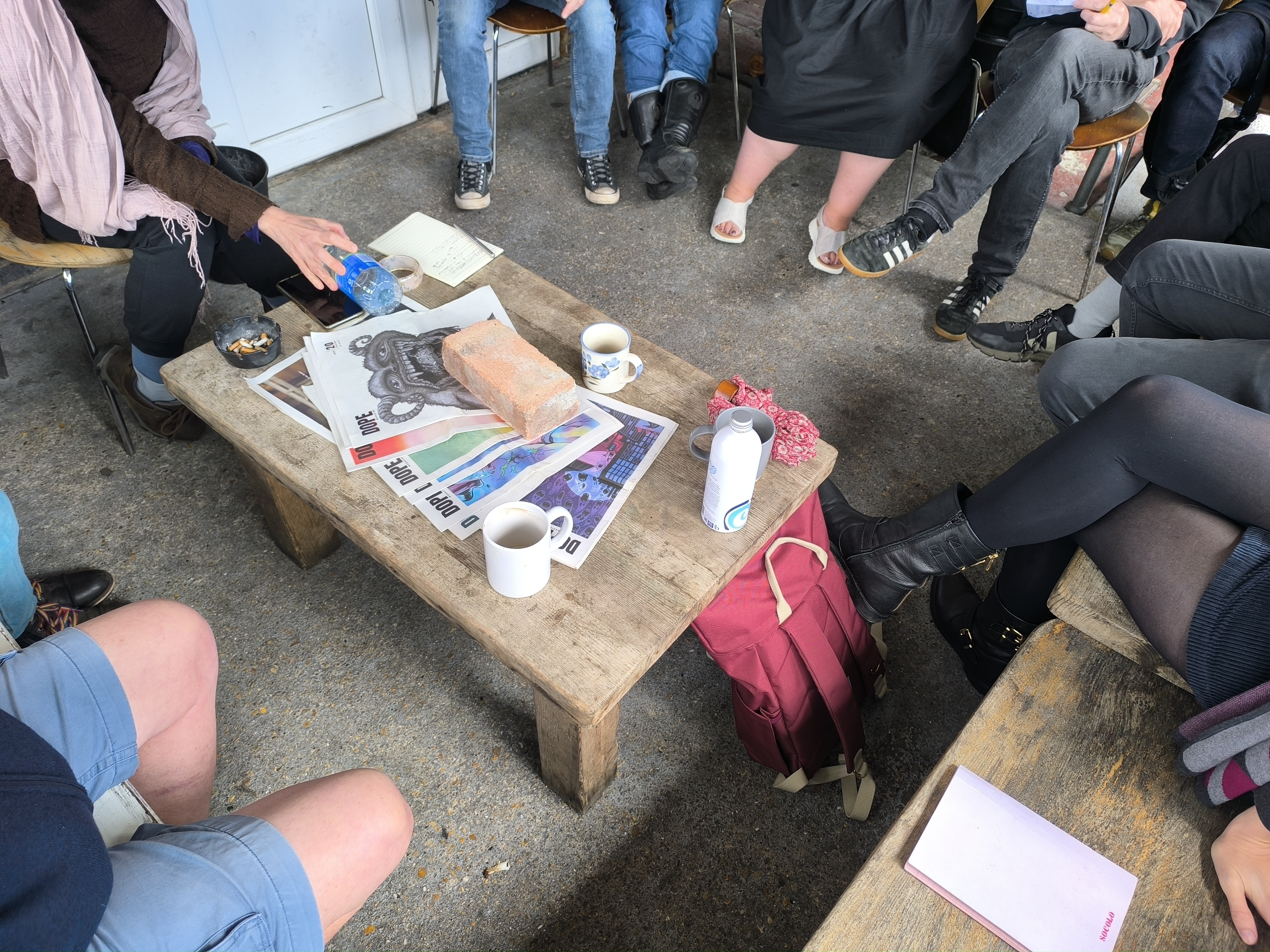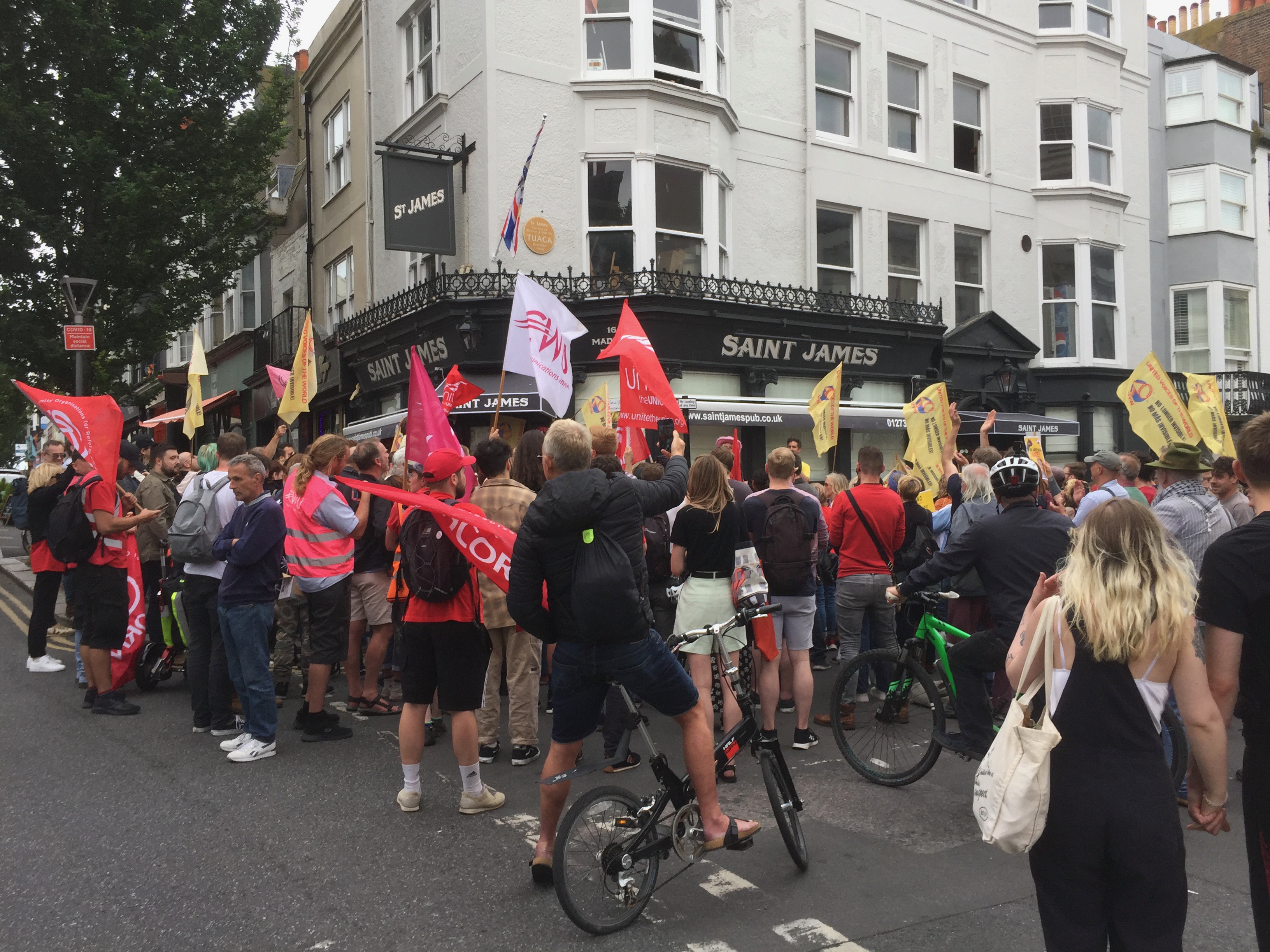This article by Keir Milburn began life as a contribution to an ongoing discussion aimed at developing a shared strategic orientation for Plan C. We have decided to publish a version at this stage in order to do our thinking in public and hopefully draw others into the discussion.
At the present moment it feels like all sections of the UK Radical Left are trapped in a state of impasse. There’s a desperate need for strategic rethinking. Yet although the situation is urgent we seem to have some breathing space in which to address the task. We are currently in the ‘year of elections’; with the UK general election in May but perhaps more importantly the recent Greek general election and a series of elections in Spain this year. Any viable Radical Left strategy will have to include the exercise of extra-parliamentary forms of power but this will have little chance of taking hold until the electoral strategies of parties such as Syriza and Podemos have reached their limit points and clarified the field for us.
We need a strategic orientation (and indeed a culture of thinking strategically) because politics without one can fall into either Comfort Politics or Fire Brigade politics. Comfort politics is when you do things because they are familiar or seem tactically (or affectively) easy. One example of this is the Climate Camp veterans who, once they had dissolved their organisation got involved in helping to defend Gypsy homes at Dale farm. While this was a worthy endeavor when I talked to participants it was obviously not the result of a strategic decision but more because their usual tactics could be fitted into the situation. Have tactics will travel. Fire Brigade politics is when people swing wildly from one campaign to another, rushing from one outrage to the next, trying to put out the fires that someone else is starting. While there are plenty of ‘fires’ that really do need attention, acting in this manner subordinates you to a timing and framing determined by someone else’s strategy (often the Government’s).
A strategic orientation is not a step by step plan but a more general vision of how change might currently be achieved. Broad agreement on this can help orient our varied activities. We can in this way make a distinction between a strategic orientation and specific initiatives (such as campaigns or projects) acting in line with this orientation.
The Electoral Turn
2015 is going to be dominated by electoral politics and their limits. There are a whole series of important national elections across Europe this year. The consequences of the one that’s already taken place, Syriza’s election in January, is going to play out through the rest of the year. The UK general election and those in Spain and Portugal will also be significant for us. As a consequence the frame of electoral politics is going to be hard to escape over next 12 months.
Closest to home we can see the effects of election fever in the Green Surge. The dramatic increase in the size of the Green Party can be explained partly as the effect of the Scottish independence vote, which galvanised politics there, partly by the examples of Syriza and Podemos and partly by the viral logic of social media; e.g. people are joining the Greens because people are joining the Greens, etc.
What’s interesting is that lots of movement people; activists, autonomists and anarchists are also joining, including some of our own members. Many people are doing so for valid reasons but after talking to quite a few ‘surgers’ it seems that for most the Green Surge doesn’t constitute a strategy, it’s the kind of thing that happens in the absence of a strategy.[1] But it also points to lessons that might be painful for us to face up to. The electoral turn was partly caused by the failure of the movements of 2011 to bring about the necessary level of change. An impasse was reached in both the pure horizontalist rejection of representative politics and the initial attempts to address the crisis of social reproduction autonomously from the State and capital.[2]
Podemos is perhaps the clearest example of this, one of their early slogans was: Turn the Social Majority into a Political Majority. It’s said that around 70% of the Spanish population supported the 15M camps and protests yet the remaining 30% still managed to elect the conservative Partido Popular in 2011. The Partido Popular has since tried to ban protest and hamstring future movements. The Greek experience is less clear but pretty similar. The right-wing New Democracy party, hand in hand with Golden Dawn and the Police, instigated a massive crackdown on the movements, which along with the devastation of austerity, seemed to demoralise the movements and make an electoral turn seem necessary. As the year goes on we’ll probably see the limits of this electoral turn made stark. We need to develop the strategy that follows this and takes the double impasse into account.
One does not simply vote out neoliberalism
Syriza has already run into serious problems trying to enact their programme. In fact they hit heavy weather in the first couple of weeks. That shouldn’t surprise us. The EU constitution is specifically designed to lock in neoliberal policy regardless of the manifesto of any individual government that gets elected. Neoliberalism is inherently anti-democratic. It seeks to either replace points of democratic decision with pseudo-markets mechanisms or, where this isn’t possible, insulate points of political decision from pressure and influence from below. Almost all neoliberal mechanisms fit into this schema; from anti-trade union laws to the lifting of capital controls, to the indebting of countries and individuals. All these changes work to break up old forms of working class power, route around points of working class leverage and prevent any return to social democracy through the simple act of electing a social democratic government. It’s true that the economic crisis has broken the neoliberal deal (where living standards were maintained because stagnating wages were offset by cheaper manufactured goods and access to cheap credit). It’s also true that the bailouts of the financial sector have moved the Nation State back to political centre stage. But the rest of neoliberalism remains in place. If you want either a turn towards Social Democracy or a turn towards Communism the neoliberal mechanisms need to be revealed and either evaded or overcome. Electoral politics will highly likely play a role in that but it won’t be sufficient on its own.[3] How could it be when the system has been designed to prevent such an outcome?
So what’s a Plan C approach in relation to this? I don’t think it can be the adoption of the ultra-Leftist pose of all knowing disinterest. We can’t just declare Plan B’s failure in advance and then abstain from involvement in events. We simply don’t know what the possibilities of the present are and can’t know how much a Plan B electoral strategy can achieve. Particularly as Syriza and Podemos are trying to pioneer Plan B+ strategies, by acting in relation to movements and so increasing their space for maneuver. What we do know is that the way it plays out will significantly affect the field upon which we have to act. We therefore need to act now to make that field as favourable as possible. Yet the other mistake would be to simply ask: “What can we do to make Plan B possible?”
Instead the premise of a Plan C is to change Left politics so it fits the potential of the times. Plan B+ politics can be useful in this task beyond the resources and protection it can provide for populations and movements. Even at their point of failure Plan B electoral politics can be useful if they can clarify the anti-democratic effects of neoliberalism that work against all forms of collective action. The Plan C approach is to make those effects and mechanisms visible as key political problems while framing them in ways that can exceed Plan B solutions. So rather than ask ‘how can we make plan B possible?’ we need to keep in mind the two more general questions from which you can draw up a strategy: ‘how do we shift things in our direction?’ And: ‘what direction is that anyway?’
I want to suggest we explore ‘the social strike’ to help answer our first question and explore ‘directional demands’ to help us answer our second.
Beyond the electoral turn: The Social Strike
I’ve already suggested that we see the electoral turn as, in part, a response to the impasse that horizontalist movements found themselves. But this impasse might look a little different once the Plan B+ electoral projects have collided with neoliberal governance and run into an impasse of their own. I think the focus will then swing back to extra-parliamentary action around the problem of leverage.[4] I’m suggesting we use the social strike as the way to frame this problem. Translating and adapting the idea of a social strike into the contemporary UK environment and working out what it would actually look like in practice is going to take lots of collective thinking and practical experimentation. As a stand in for that I’ve pulled together some ideas to suggest why it might be an appropriate angle. In particular the social strike brings out three functions that will be required from any set of practices able to play a role equivalent to the twentieth century strike. These are making the new conditions visible, disrupting the circulation of capital and directly socialising, collectivising and communising our social relations, reproduction and struggles.
At it’s most crude the social strike seems like an attempt to answer the question of how we can strike effectively under present conditions or perhaps more broadly, how can we exercise leverage? Behind this is an understanding that the strike, the withdrawal of labour, has been the principal form of material leverage for the working class since the late-nineteenth century. It was this ability to exercise force that has underlain most expressions of working class power in the twentieth century.[5]
But strikes have stopped working so well, at least in the developed world.[6] The number of days lost to strikes in the UK is at a historic low and much contemporary industrial action is more gestural than forceful. The Plan B response to this is to demand the reversal of anti-trade union laws, to which the orthodox Left would add electing a more combative union leadership. Those would both be good things but as with other Plan B strategies they are totally insufficient. Strikes, as traditionally conceived, have been primarily inhibited by changes in class composition, in particular changes in the experience of work and changes in the organisation of production.[7]
The idea of a social strike, as it was originally developed, obviously relates to the concept of the social factory, the idea that the sphere of production has escaped the factory and seeped into the rest of society. The era of the strike is associated with the era of the Mass Worker, with very large workplaces, clear lines of antagonism between workers and managers, and with collective break times and visible factory gates giving opportunities for communication and agitation. Now those kinds of mass workplaces have been broken up through outsourcing, work has become more precarious, the kinds of work we tend to do has changed, etc. These all make it much harder to establish the common interests that an effective strike requires.
Making Visible
Some social strikes have tried to address this problem by finding ways to express the new common conditions politically. A pioneer of this approach can be found in the EuroMayday movement that started in Milan using festival type marches, along with the icon San Precario, the patron Saint of Precarious workers, to make the common condition of precarity both visible and a political problem that demands to be addressed.[8] This ‘making visible’ function of the social strike can also be the point where it moves beyond Plan B politics. Look at the example of the recent ‘Vaga de Totes’ women’s strike in Barcelona, which aimed to reveal the usually invisible, devalued and feminised work of social reproduction. This work only becomes visible when it stops happening, when the dishes remain dirty. Of course the neglect of women’s experiences in Left strategies was the spur to the feminist discourse on social reproduction and demands such as “Wages for Housework” in the 1970s. This ‘making visible’ function can also be seen in the movements of 2011, e.g. 15M and Occupy. The demand for ‘Real Democracy Now!” can be seen as an attempt to bring neoliberalism’s anti-democratic mechanisms of governance into focus. These mechanisms have also played a key role in class composition by training people to adopt a more neoliberal outlook and making collective political change appear impossible.[9]
Disrupting Circulation
Perhaps the changes that have done most to undermine the traditional strike have been transformations in the organisation of production and, in particular, production’s underlying infrastructure. Once again this can be understood through the problem of leverage. Traditionally the most powerful unions were located amongst the workers who occupied key sectors in the infrastructure of the time; Dockers and rail workers occupied key pinch points in transport infrastructure while miners did the same in the energy infrastructure. Their ability to stop that infrastructure functioning could choke off production as a whole.
The 1980s and 1990s saw a ‘logistics revolution’ aiming to route around those points of working class leverage. The introduction of shipping containers and the 1990s road-building program (partly defeated in the UK by the anti-roads movement) aimed to break the dock and railway unions[10]. While a new gas-based energy infrastructure finished off the National Union of Mineworkers. New world wide supply chains coordinated ‘just in time’ by bar codes and networked computers also allowed the break up of mass workplaces in developed countries and the relocation of production to the global South. Yet while old forms of working class power were destroyed, the process of automation and geographical relocation produced new weak points.[11] ‘Just in Time’ or LEAN production, relies on keeping very low stock levels in shops and factories with bar codes allowing new stock to be ordered just-in-time for it to arrive where its needed. The Fuel blockades by farmers and truckers in 2000 showed just how vulnerable modern capitalism is to disruption of transport infrastructure. A weakness amplified by the strong tendencies towards monopolies and oligopolies in the modern economy. As a result there are small numbers of very large logistics centers in the UK that have vital infrastructural roles.
Workers at those sites would seem to occupy key points of material leverage however they tend to be un-unionised and employed under precarious conditions. Yet others too have twigged the potential here, just look at Occupy Oakland’s port shutdown. Working un-officially with the unionised dockworkers they have led the way in the move from symbolic occupations of city parks to tactics that disrupted the circulation of capital. It’s a lesson that seems to have somewhat generalised in the USA with the Black Lives Matter demonstrations also beginning to occupy highways, etc. Of course there are other examples of those without a shared workplace gaining leverage by blocking circulation. The Argentinean unemployed workers movement, the Piqueteros, are a case in point.
It’s not hard to imagine how effective a logistics strike could be if supplemented by social movements deploying tactics such as ‘Reclaim the Streets’ style street occupations in the most disruptive areas. In this vein the Italians have started to think the Social Strike alongside a Metropolitan Strike, with the idea that as production takes place throughout the whole of metropolis then we should bring the whole city to a halt.
Socialise, Collectivise, Communise
Before we get too excited there are several problems with this strategy of disruption. The most obvious is that for highly disruptive strikes to work and not be isolated and crushed through militarised policing it would need high levels of legitimacy in wider society. Such support is of course possible. A 2013 poll by Spanish newspaper El País showed 89% support for the Platform for People Affected by Mortgages campaign of direct action, eviction-blocking and escraches (protests outside politicians’ houses). Amazingly even among voters of the governing rightwing Partido Popular the approval figure remained at 87%.
The second problem with a strategy of disruption returns us to the problem of visibility. Simply put those sectors with the most leverage, the ability to cause the most disruption, tend to become the most visible and so those whose needs are most attended to. This obviously risks reinstating the invisibilities of the 1970s. The increasing amount of caring work in the economy and the waged labour market makes such an outcome even more likely. As social reproduction has a dual character, reproducing us as both workers for capital but also as human beings, then a strategy of disruption becomes problematic. How can care workers, for example, go on strike without causing suffering to those they care for and about?
To address these problems we need to develop the third character of the social strike, which sees it try and directly socialize (or communize) relations. Most obviously this involves striking (or otherwise acting) in ways that maximise feelings of collectivity and enhance general levels of sociability.
To understand this we can go back to the very birth of the social strike idea. In 1995 there was a transport strike in Paris. Toni Negri and the other Italian Autonomists who were living there in exile at the time got very excited about it. This was in part because the disruption of transport revealed a key point of leverage but also because the strike seemed to have made Paris more sociable in some ways. In order to deal with the strike people had to cooperate more, perhaps by car pooling or walking together and therefore getting a different perspective on the city. It was this increased sociability that provoked the title ‘social’ strike but this dimension seems to have been lost a bit in recent discussions.
For a more recent example of a tactic that tried to socialise a strike we could look at Bradford IWW’s organisation of a collective crèche during the recent teachers strikes (perhaps the crèche Plan C organised during the TUC march is another example). More generally though this approach to the social strike might provide a way to link up the two extra-parliamentary forms of exercising power: the power of disruption (strikes, blockades, occupations, etc.) and the power of self-reproduction (solidarity networks, socialist clothing banks, Pay as You Feel cafes, etc).
Perhaps we can see the latter, projects and campaigns to directly address the crisis of social reproduction, as a means of socialising society and therefore moving things in the direction we want it to go. But we can also see them as reclaiming some of the resources needed to make more directly antagonistic tactics, tactics of disruption, more winnable. After all, the response to any unlimited strike is to starve out the strikers and their families. When we go on all out strike we are trying to cause a crisis in the reproduction of capital while the bosses try to provoked a crisis of social reproduction amongst the workers. The winner is the side that holds out longest. The reason the UK Miners could strike for so long in 1984-5 was because they had strong communities (as well as networks of political support) that could help them address the problem of social reproduction. It was the communities that organised the collective kitchens, and the political supporters who organised collections. These sorts of homogenous communities with a strong history of struggle have largely been destroyed but perhaps projects of self-reproduction can establish new networks of support. We might call this either building counter-power or seizing the means of social reproduction.
These ongoing projects also help to establish legitimacy for more disruptive tactics, especially when they are tied to politicising a specific problem and exposing the inability of ‘established channels’ to address them. Perhaps the natural accompaniment to this tactic is a reinvention of the ‘good work strike’. Traditionally this targets the needs of bosses in the work process rather than the needs of other workers. The classic example is the refusal of transport workers to stamp tickets. But a side effect of this tactic is to reveal how the demands of capital and management gets in the way of actually addressing people’s needs. The modern version might well take aim at the bureaucracy of neoliberal managerialism, refusing to participate in, or acting to otherwise reveal, the endless audits and performance management that does so much to prevent people doing the actually useful part of their jobs.
Directional Demands
If the section above is about directly moving society in the direction we want, and therefore creating the conditions for struggle on a greater scale, then the same principles should be applied to determining more precisely what direction we need to move in. I think the idea of Directional Demands fits the bill for this.
In short directional demands aim to provide a direction of travel rather than simply describe the wish for ‘full communism.’ They need to make sense within existing conditions while pointing beyond them. Indeed they need to make better sense of the current situation and the potential it holds than conventional politics does. They need to play a compositional role, I.E. link different sectors or interests together or indeed produce a new subject of their own. And their fulfillment, or indeed movement towards their fulfillment needs to leave us, the working class, the multitude or whatever, in a stronger position, able to better articulate what we want and better able to exercise the power to get there. The Universal Basic Income (if framed correctly) could provide one example, a Debt Jubilee or Universal Expropriation (a residency restriction on housing), could provide others. Developing a program of Directional Demands is a way of addressing the electoral turn while leaving room to go beyond it.
In fact it seems to me that directional demands and something like a social strike would have to work in tandem to be effective. Demands only make sense once the social problem they are associated with have been made into a political problem that demands to be addressed (think of how UK Uncut made tax avoidance a political problem that everyone was discussing and which every political party thought they had to address somehow). However demands are only granted if there is the leverage, or threat of leverage, to make that demand seem the least worst option for capital’s managers. The demand for a basic income, for example, still doesn’t quite make sense to the person on the street despite it fitting with a whole series of technological and social trends. That’s because those trends haven’t been made into a key political problems yet. Social strikes in Italy and Spain have been aiming to do just that and therefore make the Basic Income the obvious solution. In turn a disruptive social strike can only gain legitimacy if it’s tied to an attractive story about the kinds of change we want to bring about. Disruption for disruption’s sake will always be rejected but disruption as a necessary moment in necessary transformation is easier to accept.
Onwards
Accepting this doesn’t mean we should just set the date for the great social strike? It is more a matter of asking what tactics we can adopt to socialise existing strikes and how we might help turn social movements and social reproduction struggles away from merely symbolic action and towards the exercise of material leverage? I think Plan C have already been acting to try and socialise strikes. Just look at the J30 assemblies and website aiming to generalise that strike day in 2011, or indeed the #StrikeUp hashtags in last year’s public sector strikes. And I think that social movements are already moving towards the exercise of material leverage. The Social Strike tries to name an existing tendency in contemporary struggles or at least provides room for existing repertoires to fit in.
2015 will continue to be the year of the electoral turn. There’s probably no escaping this even if we want to. What this means is that whilst we participate in its unfolding – testing its limits and remaining vigilant to the new spaces it creates – we can also use it as a year of experimentation. Treat this as an open call. How might a Social Strike framework be put into practice? What are 21st century capitalism’s new weak points? How can we make use of the new electoral entities and the openings they create? Most importantly, with the traditional strike tactic (and with it the old Left) increasingly disarmed, what do we need to create in order to build leverage?
[1] We could probably put Left Unity in that tendency as well. Although we could also read Left Unity more sympathetically as the (post) Trotskyist Left trying to rid itself of the horrendous, sectarian political culture that built up over the Neoliberal years. As so often happens the name reveals, whether fully consciously or not, the foundational problem that the organisation came together to address. Left Unity tries to do what it says on the tin. In this sense it can be seen as a positive move – although at times I worry that Left Unity is the best parts of the ‘old Left’ huddling together around an electoral strategy that allows them to put off the more radical, and indeed more difficult, task of rethinking that the present situation requires. Remember 15M in Spain was, in part, a revolution against the old Left (both the neoliberal Left but also the old ‘revolutionary’ Left). Podemos represents an adaptation by segments of the old Left to the new political common sense created by 15M.
[2] The later was one of our opening bets for what a Plan C approach would look like but events have shown they need to be part of a wider strategy of exercising power.
[3] One of the positive effects of the electoral turn is the wider acceptance that an electoral expression of the movements will most probably play a part in an effective contemporary Left politics. While this seems a much more realistic perspective it also carries a lot of risks.
[4] By leverage I mean the ability to exert force or bring pressure to shift things in a particular direction. Leverage often implies the application of force in the manner and at the point of maximum effect. So force exercised at key points can have effects disproportionate to the amount of force applied. But my use here also aims at distinguishing this ‘material leverage’ from the more symbolic types of action that have dominated movements over the last twenty years.
[5] To be fair insurrection and various forms of armed struggle were also central forms of leverage in the nineteenth and twentieth century. But these were often tied up with the idea of the general strike or theorised as appropriate to peasant societies because they had less access to the leverage of the strike. Similarly riots have primarily been seen as the tactic used by those sectors or those places that the strike tactic couldn’t reach.
[6] There have been plenty of successful strikes in China recently, for example, and incomes there have been rising dramatically as a result.
[7] The concept of class composition was central to the Italian Operaist tradition (which in the UK has fed into what’s called autonomism). It sees the composition of the working class as changing historically through cycles of struggle. Capital restructures through technological innovation and reorganizations of the work process. These often seek to undo established forms of working-class power. These changes produce a new ‘technical’ composition of the working class with particular political affordances, perhaps, for example, the reorganized work process allows good communication between certain sectors of workers but blocks it between others. The second aspect is the political composition of the working class, this is determined by the effectiveness of the forms of organisation and action through which these affordances are exploited or overcome and the interests of the class asserted against the interest of capital.
[8] For more on EuroMayday see: http://five.fibreculturejournal.org/fcj-023-on-the-life-and-deeds-of-san-precario-patron-saint-of-precarious-workers-and-lives/
[9] The tactics of the 2011 movements, the camps, occupations and general assemblies can be seen as attempts to route around the anti-democratic mechanisms of neoliberalism through more directly democratic means. In hindsight, however, they probably functioned more effectively as tools to overcome the individualizing, self-blaming culture of neoliberalism by rediscovering collectivity. It is this that has produced the conditions for further struggle, helping the post-Ferguson movement to emerge in the US but also making the electoral turn possible elsewhere.
[10] The common interests that led to an alliance between ‘Reclaim the Streets’ and the Liverpool Dockers in 1996-7 can be understood in this light.
[11] This talk about infrastructure by Nick Srnicek is good on this: http://vimeo.com/117434029





